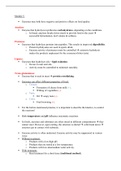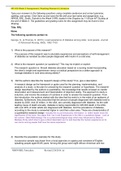Samenvatting
Summary module 5 - Predicting Food Quality (31306)
- Instelling
- Wageningen University (WUR)
I have summarized the contents of the feedback lecture, lecture notes and knowledge clips of module 5 into this document. This will help you prepare for the exam! Good luck studying.
[Meer zien]













